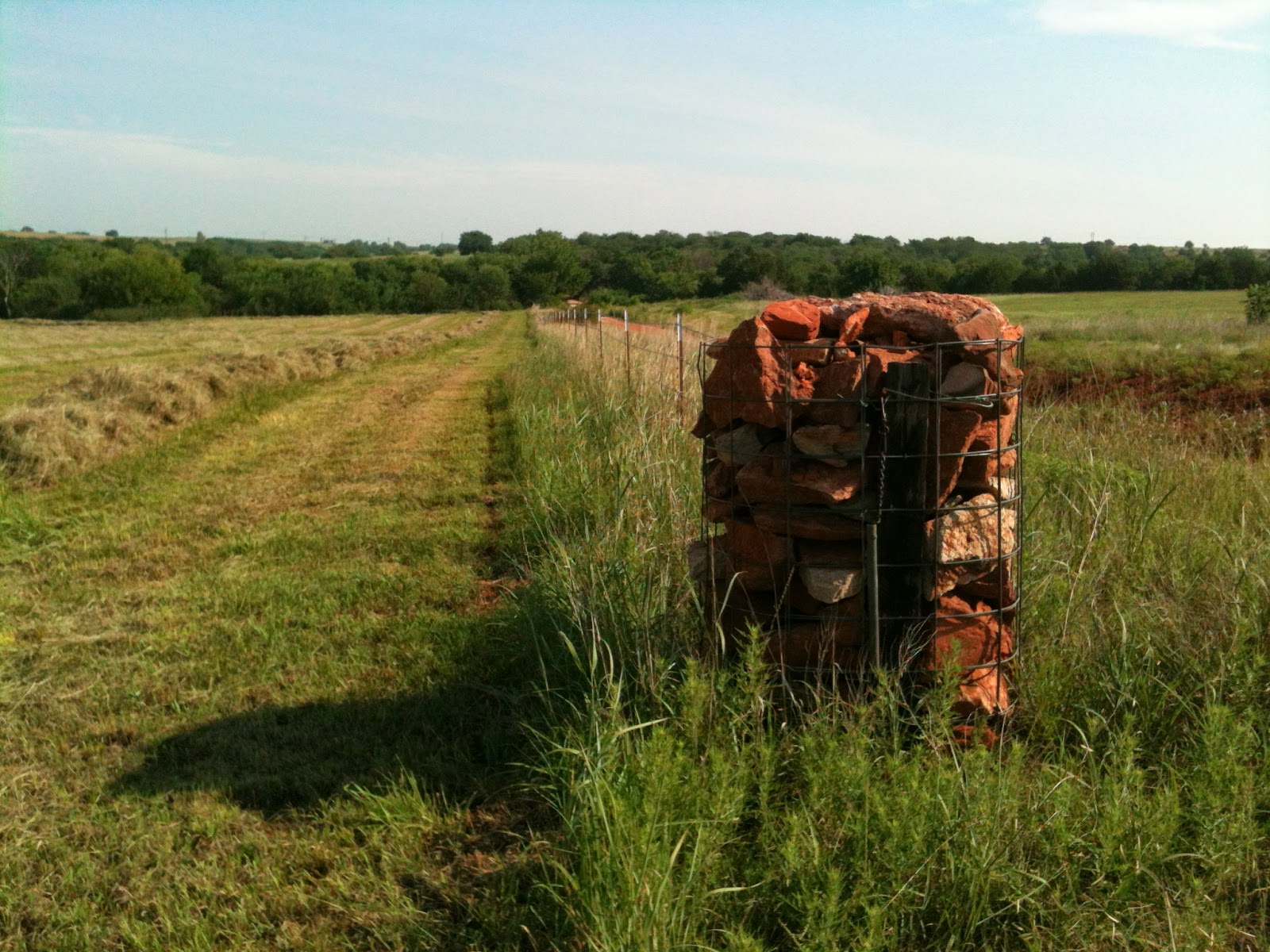Native warm season grasses (little bluestem, switchgrass, indian grass, big bluestem) are usually under appreciated, but I think they are some of my best grasses and pastures because they are reliable producers, are tolerant of low input management, and they seem to be relatively drought resistant.
A couple of years ago, I built a fence along the road so that I would have the option of just grazing it instead of only having the option of baling it for hay. I wasn't planning on baling it this year, but my crabgrass doesn't seem to be growing like I think it should be growing, so since most of my pastures seem to have enough grass, I decided to go ahead and bale it as a hedge against a poor crabgrass hay crop. I've been meaning to graze this field instead of baling it ever since I put the fence up, but you'd be surprised how difficult it is to NOT bale a hay meadow (would it still be a hay meadow if I don't bale it?). Next year, I'm going to try my hardest to actually graze it instead of baling it.
Baling hay is a relatively simple process of cutting it, letting it dry, raking it into windrows, and then baling it. Since I'm still working on my picture-taking skills, I took a few pictures of the process so everyone could get a sense of what it looks like around this part of the farm.
 |
| Cutting hay |
 |
| Raking hay into windrows |
 |
| Raked and ready to bale |















